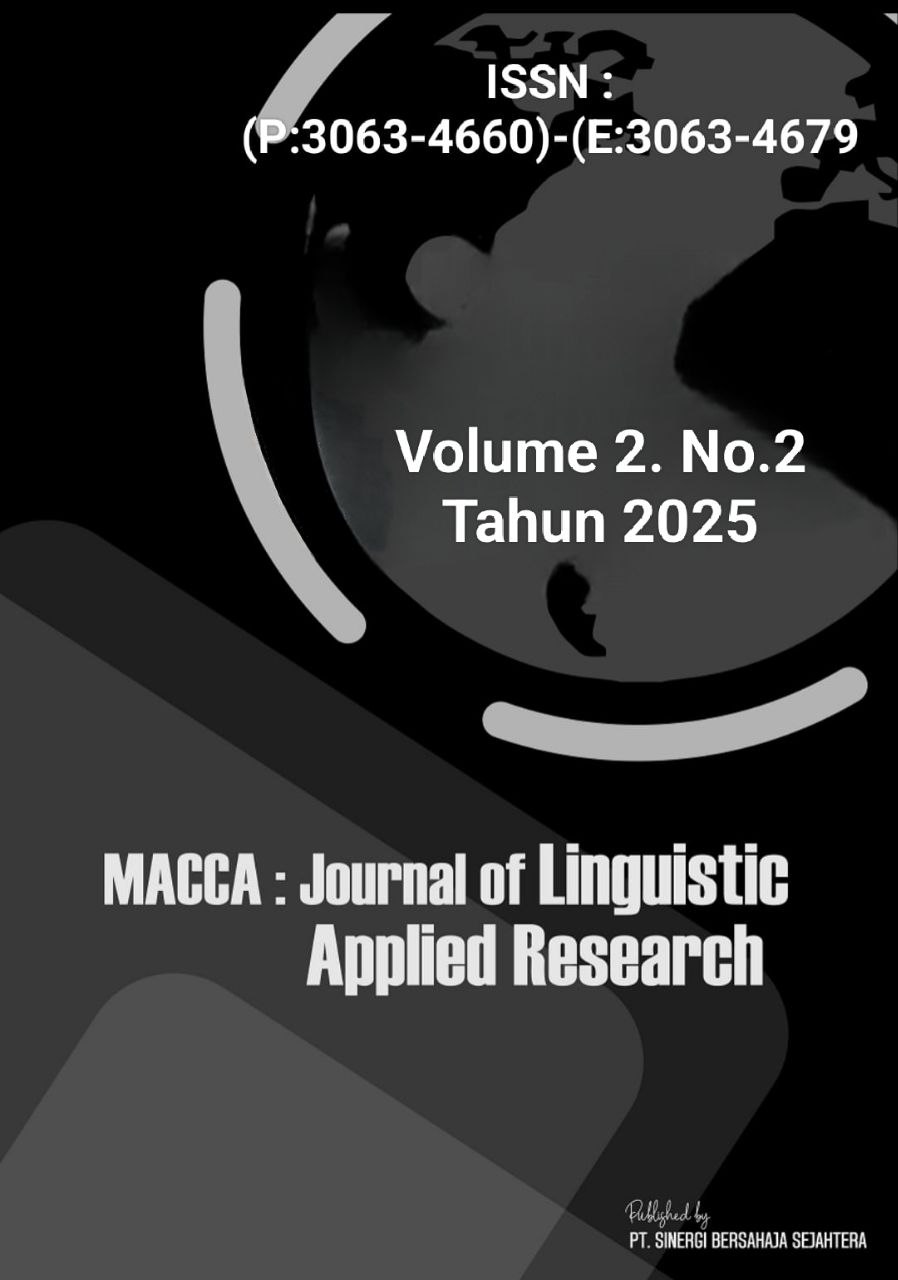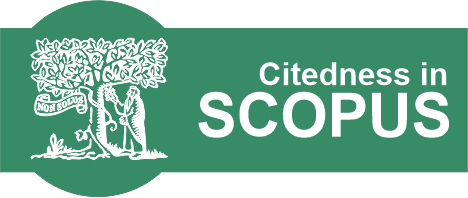Investigating Chalangges Faced By Elt Students : Sociolinguistic Approach
Keywords:
:ELT students, sociolinguistic challenges, motivation, academic decision-makingAbstract
This study investigates the challenges faced by English Language Teaching (ELT) students in choosing English as their major from a sociolinguistic perspective. It aims to identify both internal factors—such as motivation, interest, academic confidence, and career expectations—and external factors, including family and societal expectations, peer influence, availability of resources, and university curriculum, that influence students’ academic decisions and experiences. The research employed a qualitative descriptive method, collecting data through interviews and Likert-scale questionnaires administered to second-semester ELT students at Universitas Muhammadiyah Sidenreng Rappang. Data were analyzed thematically and visualized using charts and diagrams. The findings reveal that academic challenges and family expectations are among the most dominant influences, with some students demonstrating high motivation and confidence while others struggle with language anxiety and limited support. Sociolinguistic elements, such as cultural norms and peer dynamics, also play a significant role in shaping academic choices. The study emphasizes the importance of understanding students’ sociocultural backgrounds in designing effective educational strategies. These results provide valuable insights for educators, curriculum developers, and academic advisors in supporting ELT students’ learning and career development
References
Alwasilah, A. C. (2018). Language, culture, and education: The Indonesian experience. Bandung: Penerbit Angkasa.
Anggrisia, N. F., & Robah, A. (2020). Challenges in learning English as a foreign language in Indonesia: A case study of speaking difficulties. Journal of Language Teaching and Learning, 5(2), 134–145.
Arikunto, S. (1996). Prosedur penelitian: Suatu pendekatan praktik. Jakarta: Rineka Cipta.
Bandura, A. (1977). Social learning theory. Englewood Cliffs, NJ: Prentice-Hall.
Cohen, L., Manion, L., & Morrison, K. (2017). Research methods in education (8th ed.). New York, NY: Routledge.
Creswell, J. W. (2014). Qualitative inquiry and research design: Choosing among five approaches (3rd ed.). Thousand Oaks, CA: SAGE Publications.
Deci, E. L., & Ryan, R. M. (1985). Intrinsic motivation and self-determination in human behavior. New York, NY: Plenum Press.
Dini Intan Sari, Ibrahim Manda, Nurul Faradillah, Andi Sadapotto, & Sam Hermansyah. (2025). Analysis of Student’s Learning Difficulties in the English Language Subject Class VI Primary School: A Case Study at SDI Kalepu. INTERACTION: Jurnal Pendidikan Bahasa, 12(1), 1029–1037. https://doi.org/10.36232/interactionjournal.v12i1.3467
Eccles, J. S., Adler, T. F., Futterman, R., Goff, S. B., Kaczala, C. M., Meece, J. L., & Midgley, C. (1983). Expectations, values, and academic behaviors. In J. T. Spence (Ed.), Achievement and achievement motives: Psychological and sociological approaches (pp. 75–146). San Francisco, CA: W. H. Freeman.
Ecles, J. S., & Wigfield, A. (2002). Motivational beliefs, values, and goals. Annual Review of Psychology, 53(1), 109–132. https://doi.org/10.1146/annurev.psych.53.100901.135153
Galton, F. (1890). Finger prints. London: Macmillan.
Gardner, R. C. (1985). Social psychology and second language learning: The role of attitudes and motivation. London: Edward Arnold.
Haslinda, Andi Sadapotto, Syamsu Tang, & Sam Hermansyah. (2025). Analyzing English Reading Skills Through Project Based Learning Approach in EFL Classroom. INTERACTION: Jurnal Pendidikan Bahasa, 12(1), 987–998. https://doi.org/10.36232/interactionjournal.v12i1.3365
Hodkinson, P., & Sparkes, A. C. (1997). Careership: A sociological theory of career decision making. British Journal of Sociology of Education, 18(1), 29–44. https://doi.org/10.1080/0142569970180102
Humairoh, S. A. (2019). Overcoming the challenges of writing English essays: A case study of Indonesian university students. International Journal of Educational Research, 7(3), 78–90.
Islam, R., & Samsudin, A. (2020). Exploring decision-making factors in higher education. Jakarta: Universitas XYZ Press.
Jimmy Cromico, & Sam Hermansyah. (2025). An Analysis of Factors Affecting EFL Learners’ Reading Strategy Use. INTERACTION: Jurnal Pendidikan Bahasa, 12(1), 1009–1017. https://doi.org/10.36232/interactionjournal.v12i1.3462
Lent, R. W., Brown, S. D., & Hackett, G. (1994). Toward a unifying social cognitive theory of career and academic interest, choice, and performance. Journal of Vocational Behavior, 45(1), 79–122. https://doi.org/10.1006/jvbe.1994.1027
Neergaard, H., et al. (2009). Handbook of qualitative research techniques and analysis. London: SAGE Publications.
Nilmasari, F. (2014). Metode penelitian kualitatif dalam pendidikan. Bandung: Alfabeta.
Patton, M. Q. (1990). Qualitative evaluation and research methods (2nd ed.). Newbury Park, CA: SAGE Publications.
Sam Hermansyah, & Ahmad Rizal Majid. (2025). The Use of Probing-Prompting Technique to Improve Reading Comprehension of Eighth Grade Students. INTERACTION: Jurnal Pendidikan Bahasa, 12(1), 543–556. https://doi.org/10.36232/interactionjournal.v12i1.2660
Smith, J. (2020). The impact of family environment and school opportunities on students’ career decision-making. Career Development Quarterly, 68(2), 112–126. https://doi.org/10.1002/cdq.12229
Wulandari, A., et al. (2020). Factors influencing students’ choice of English as a major. Journal of Educational Studies, 45(3), 120–130.
Downloads
Published
How to Cite
Issue
Section
License
Copyright (c) 2025 Fitri Puji Astuti, Andi Sadapotto, nurul Faradillah, syamsu T

This work is licensed under a Creative Commons Attribution-ShareAlike 4.0 International License.



































